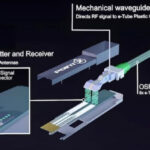When selecting copper wire for electrical or industrial use, one of the key considerations is whether to use hard drawn or soft drawn copper. While both are made from high-purity copper, their mechanical properties and applications differ significantly due to the way they’re processed.
🔹 1. Manufacturing Process
The main difference lies in how the copper is treated after drawing:
Hard Drawn Copper: Produced by cold-drawing copper wire through a series of dies without subsequent annealing (heating). This process hardens the copper, increasing its tensile strength but reducing flexibility.
Soft Drawn Copper: Produced by annealing (heating and slowly cooling) the drawn copper. This restores ductility and makes the wire softer and easier to bend or form.
🔹 2. Mechanical & Electrical Properties
| Property | Hard Drawn Copper | Soft Drawn Copper |
|---|---|---|
| Tensile Strength | High (350–400 MPa) | Lower (200–250 MPa) |
| Flexibility | Stiff, not easily bent | Very flexible, easy to handle |
| Conductivity | Slightly lower (~97–98% IACS) | Higher (~100% IACS) |
| Fatigue Resistance | Excellent under tension | Better under vibration |
| Durability | Ideal for static installations | Ideal for dynamic or flexible use |
🔹 3. Applications
✅ Hard Drawn Copper is typically used where strength and stability are more important than flexibility:
Overhead power transmission and distribution lines
Trolley wires for railways and trams
Grounding conductors and busbars
Applications under mechanical tension or long spans
✅ Soft Drawn Copper is preferred where flexibility and easy installation are critical:
Building wiring and indoor electrical systems
Coils, motors, and transformers
Extension cords and flexible connections
Telecommunication cables and instrumentation wiring
🔹 4. Summary of Key Differences
| Feature | Hard Drawn Copper | Soft Drawn Copper |
|---|---|---|
| Production | Cold-drawn, no annealing | Annealed (heat-treated) |
| Rigidity | Rigid and strong | Flexible and soft |
| Best for | Long-distance, tension-bearing lines | Wiring needing frequent bending |
| Ease of Installation | Harder to install | Easier to install and terminate |
🔹 5. Choosing the Right One
Your choice between hard drawn and soft drawn copper depends on your specific project requirements:
If you need mechanical strength and durability under tension, go with hard drawn copper.
If you need easy installation, flexibility, and maximum conductivity, soft drawn copper is the better choice.
⚡ Conclusion
Both hard drawn and soft drawn copper serve vital roles in the electrical industry. Understanding their differences ensures better performance, reliability, and safety in your system.
👉 Looking for premium-quality copper conductors?
TOT Wire & Cable offers a full range of hard drawn and soft drawn copper wires designed for industrial, electrical, and utility applications.
Contact us today for expert guidance and a competitive quote.





